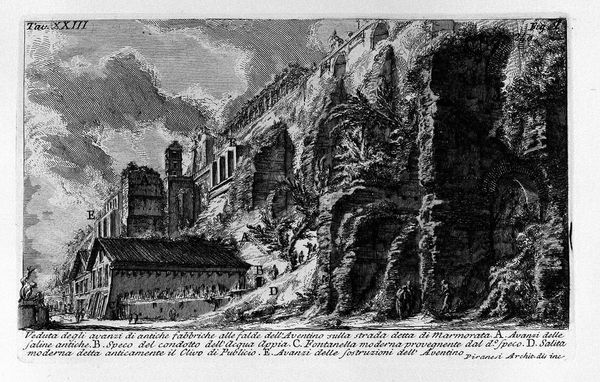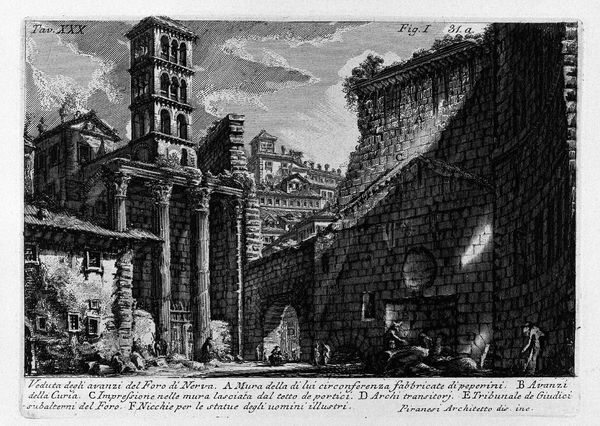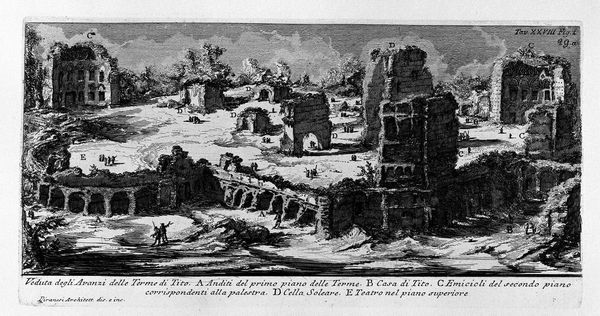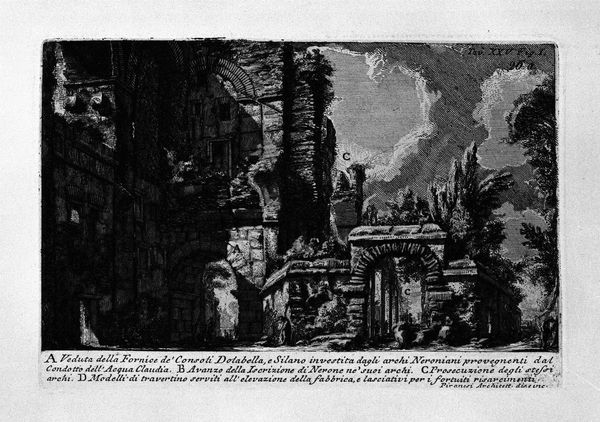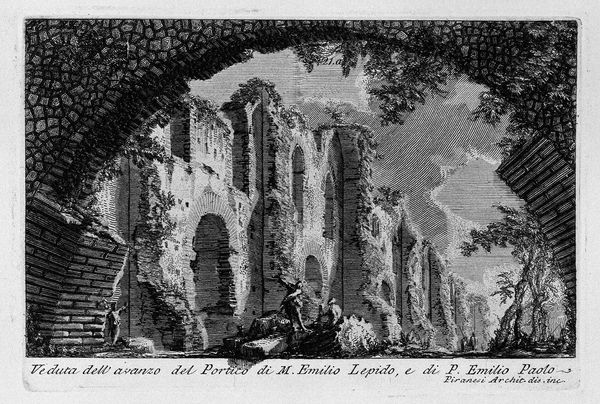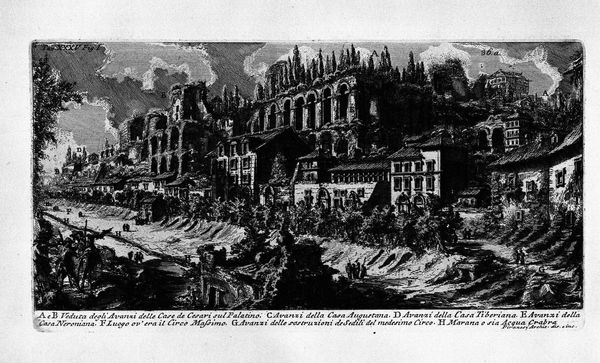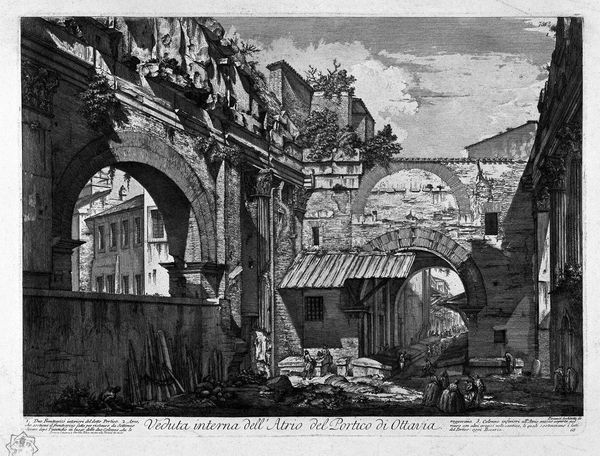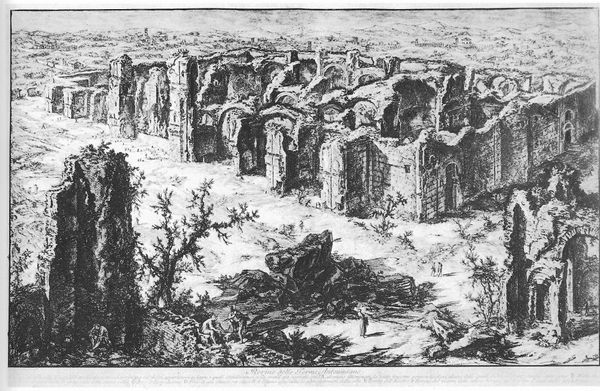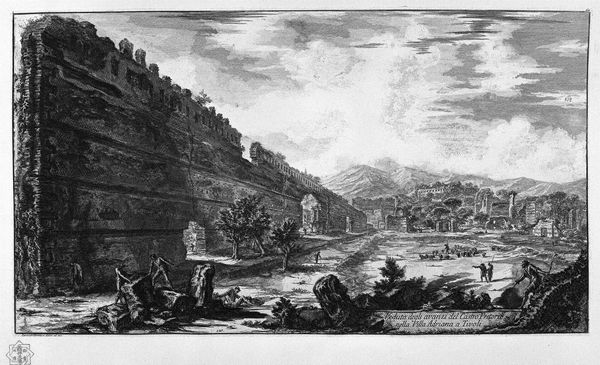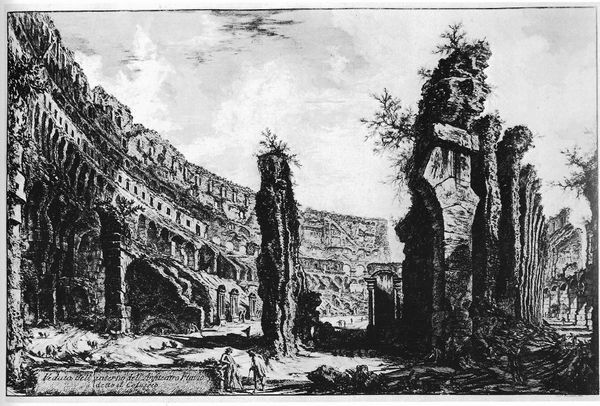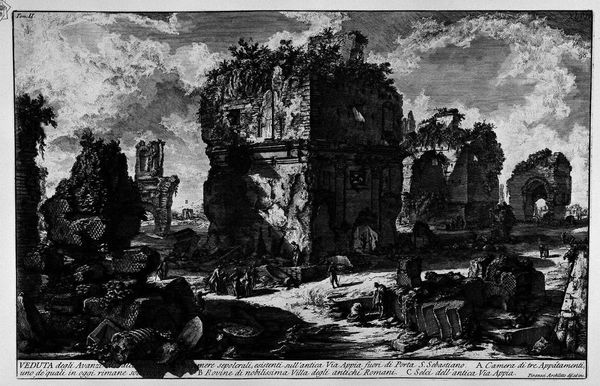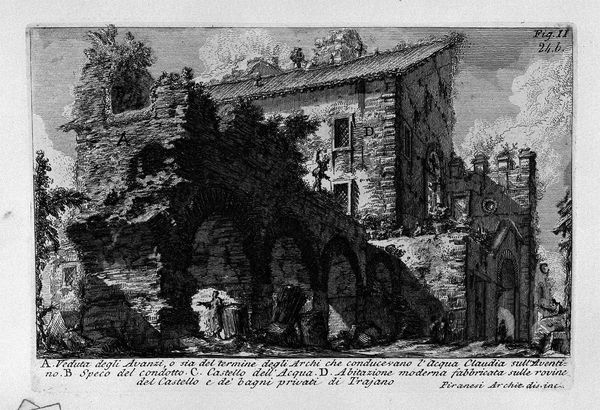
drawing, print, etching, architecture
drawing
etching
carving
landscape
romanesque
history-painting
architecture
Copyright: Public domain
Curator: I shall guide you with an orientation concerning “The Roman Antiquities, t. 1, Plate XVI” a print, etching, and drawing by Giovanni Battista Piranesi, circa 1756. A chaotic beauty unfolds from it. A world dissolving into decay. Tell me, what is your initial reading? Editor: Thanks, that sets it up nicely! When I look at this piece, I am really struck by the contrast between the intricate details and the overall sense of ruin. The architecture feels very solid, yet nature is reclaiming everything. How do you interpret this contrast? Curator: Note how Piranesi meticulously renders the textures of stone and foliage. How does this visual approach amplify the inherent tension between enduring architectural forms and the organic forces of nature’s reclamation? Look closely, does this contrast enhance or diminish the emotive depth? Editor: I think the level of detail definitely heightens the emotion, creating a sense of awe and also loss. Are there any other visual techniques that stand out to you? Curator: Consider the perspective. Piranesi employs a deep, almost theatrical perspective that invites the viewer into the scene. How does the stark chiaroscuro contribute to the composition’s dramatic quality and, consequently, the narrative? Editor: Yes, it’s like we’re on a stage set that is also falling apart! I am now seeing the work's temporality in new ways, as architecture, carving and landscapes combine and change with time. Thank you. Curator: An acute observation that reflects upon history’s material implications, and our relation to those things lost.
Comments
No comments
Be the first to comment and join the conversation on the ultimate creative platform.
